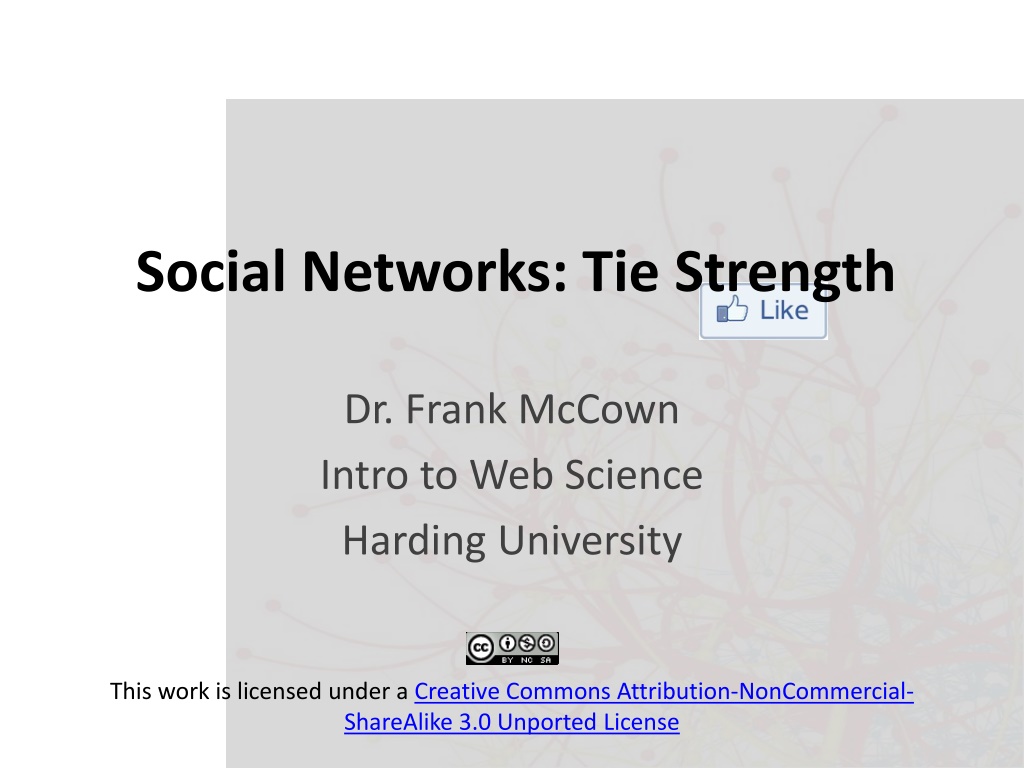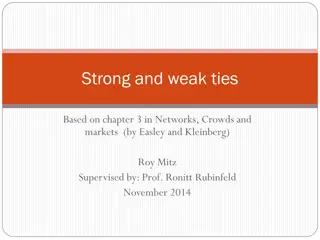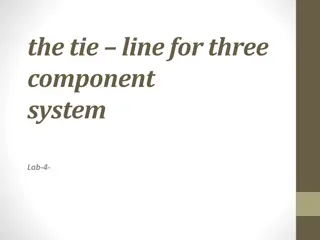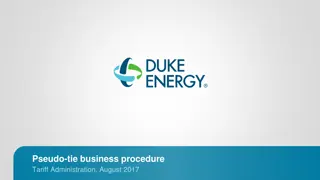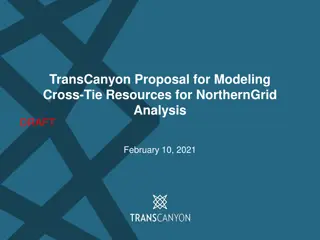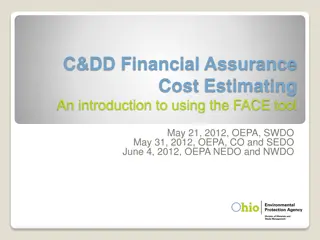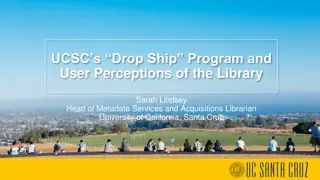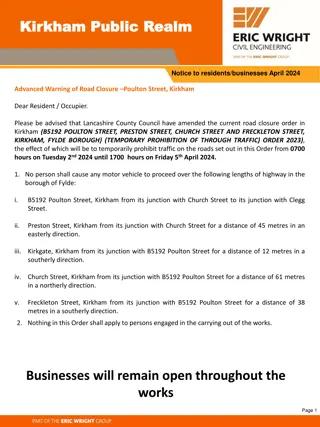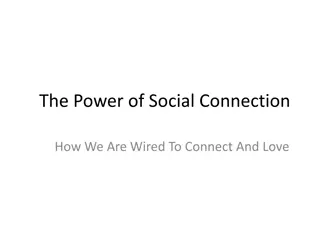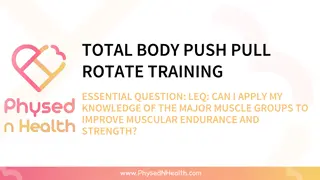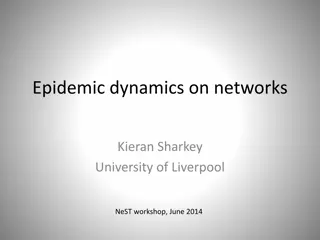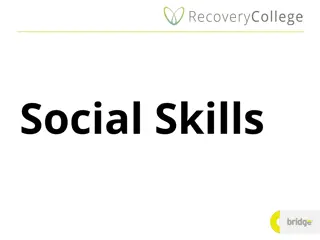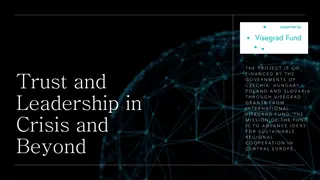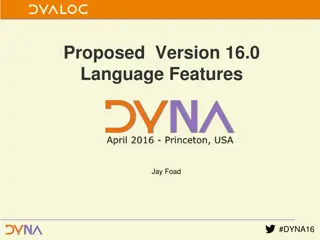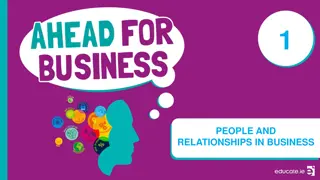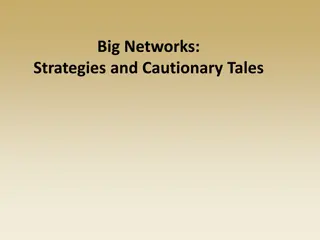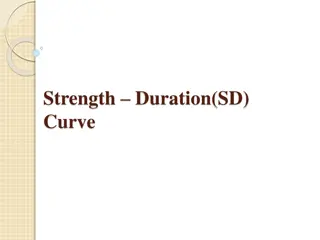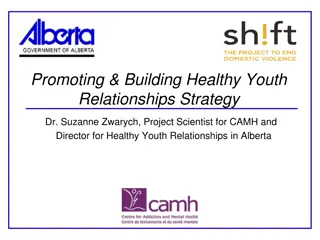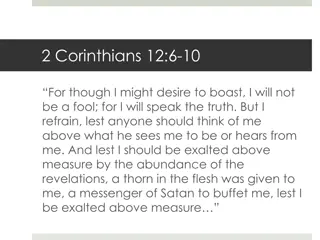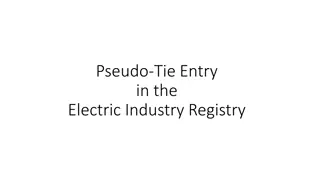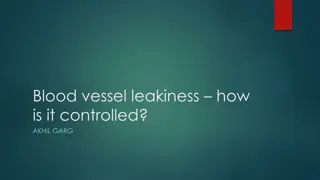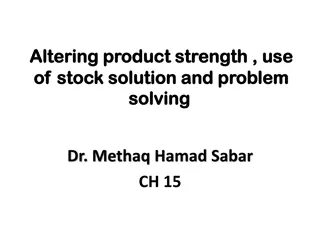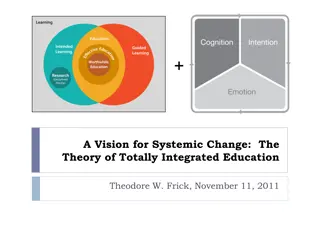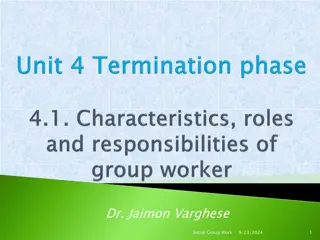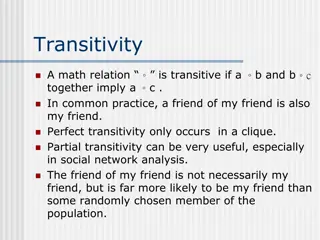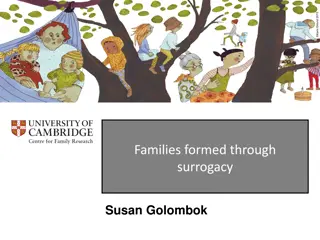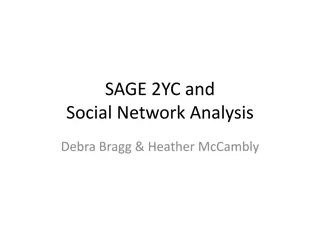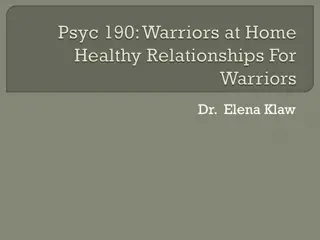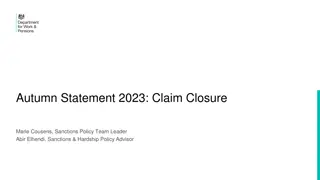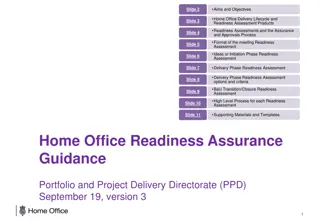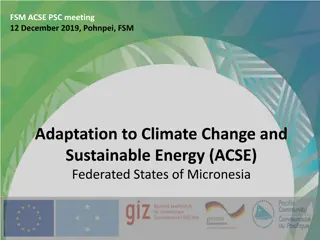Understanding Social Network Dynamics: Tie Strength, Triadic Closure, and Human Relationships
Explore the concepts of tie strength in social networks, the strong vs. weak ties distinction, Dunbar's number theory on stable relationships, the role of common friends in friendship formation, and the reasons behind triadic closure in network dynamics. Discover how human relationships are influenced by these factors and the implications they have on social connections.
Download Presentation

Please find below an Image/Link to download the presentation.
The content on the website is provided AS IS for your information and personal use only. It may not be sold, licensed, or shared on other websites without obtaining consent from the author. Download presentation by click this link. If you encounter any issues during the download, it is possible that the publisher has removed the file from their server.
E N D
Presentation Transcript
Social Networks: Tie Strength Dr. Frank McCown Intro to Web Science Harding University This work is licensed under a Creative Commons Attribution-NonCommercial- ShareAlike 3.0 Unported License
Slides based on Ch 3 of Networks, Crowds and Markets by Easley & Kleinberg (2010) http://www.cs.cornell.edu/home/kleinber/networks-book/
Strong vs. Weak Ties Tie strength refers to general sense of closeness with another person Strong: Friends, dependable sources of social or emotional support Weak: Acquaintances, act as bridges that connect clusters within a social network
Paul Adams (2012) Grouped Image: http://ptgmedia.pearsoncmg.com/images/9780321804112/samplefiles/0321804112.pdf
5-15-50-150-500 Rule Robin Dunbar (2010) How Many Friends Does One Person Need? Dunbar s number: Humans can comfortably maintain 150 stable relationships Common social network pattern Inner circle: 5 Sympathy group: 12-15 Semi-regular group: 50 Stable social group: 150 (Dunbar s number) Friend of friends group: 500 (weak ties)
If two people in a social network have a friend in common, then there is an increased likelihood that they will become friends themselves at home point in the future. - Anatol Rapoport (1953)
Triadic Closure Common friend A B C Likely to appear
Reasons for Triadic Closure Opportunity A spending time with B & C increases chance they will meet Trust Research shows that B & C are more likely to trust each other if they are aware of mutual friend A Incentive Research shows that latent stress occurs when mutual friends are not friends with each other
Measuring Triadic Closure Clustering coefficient probability that any two randomly selected friends of a node are also friends CC for a node = # of possible friend pairs # of friend pairs = 0 when noneof node s friends are friends with each other = 1 when allof node s friends are friends with each other
Clustering Coefficient A s CC: BC / BC = 1 F s CC: - / BE = 0 A B C D F C s CC: E AB / AB, AD, BD = 1/3 CC for a node = # of friend pairs / # of possible friend pairs
Tie Strength and Triadic Closure A A B B C C More likely to form Less likely to form Triadic closure is more likely to form when initial edges are strong
Bridges A B Edge is a bridge if removing the edge creates two components
Local Bridges C A B Localbridge Edge whose 1) endpoints have no nodes in common and 2) removal does not create new components
Strong and Weak Ties Weak Strong C A B Not everyone is your BFF!
Variable Tie Strength 10 0 6 C 1 9 A B Can use more fine-grained methods to determine tie strength, like number of Facebook messages exchanged
Strong Triadic Closure Property Node A satisfies the Strong Triadic Closure Property if it has strong ties to two other nodes B and C, and there is some edge between B and C violates satisfies A A B B C C
Strong Triadic Closure and Bridges Can a node with at least 2 strong edges satisfy the STC property and be involved in a local bridge that is a strong tie? C A B ? Answer: No! Why not?
Strong Triadic Closure and Bridges STC property says edge must form when two strong edges emanate from the same node Therefore a network that satisfies the STC property and has a sufficient number of strong ties will likely have only weak local bridges Does not always hold in real social networks, but useful theoretical framework in which to understand connections and test theories
Large-Scale Data Studies Put new concepts to work by examining several large-scale studies Examples: Cell phone usage Facebook Twitter
Cell Phone Social Network Onnela et al. (2007), Structure and tie strengths in mobile communication networks 18 weeks of cell phone data covering 20% of country s population Node = cell phone user Edge = if two nodes called each other (both directions) Tie strength = duration of calls
Structure around randomly chosen individual Call duration https://www.pnas.org/content/pnas/104/18/7332.full.pdf
Cell Phone Social Network Instead of determining if edge is a local bridge or not, use neighborhood overlap neighbors of both A and B Neighborhood overlap = neighbors of A or B = 1 if all neighbors of A and B are connected = 0 if no neighbors are connected (local bridge) Close to 0 is almost a local bridge
Neighborhood Overlap D C E A B F G E Neighborhood overlap of AD = = 1/5 C, E, F, G, B
Neighborhood Overlap D C E A B F G - Neighborhood overlap of AB = = 0 D, E, F, G, etc.
Neighborhood Overlap Onnela et al. s findings Tie Strength http://www.cs.cornell.edu/home/kleinber/networks-book/networks-book-ch03.pdf
Removing Ties 84% of cell phone graph nodes lied in a single giant component Do weak ties link strongly connected components? Removed edges one at a time starting with strongest edges giant component slowly erodes Removed edges starting with weakest edges giant component shrank quicker, remnants broke apart quickly once critical weak edges removed
Tie Strength on Facebook Marlow et al. (2009), Maintained relationships on Facebook http://overstated.net/2009/03/09/maintained-relationships-on-facebook/ Analyzed tie strength of Facebook users using one month of interactions Three categories of links: Reciprocal/Mutual messages sent both ways One-way at least one message sent (friend may or may not have reciprocated) Maintained user clicked on Friend s content (from feed) or profile more than once
Typical User s Network Less interest College & high school friends? http://overstated.net/2009/03/09/maintained-relationships-on-facebook
Limits to Maintaining Relationships passive engagement Reciprocal messages sent both ways One-way at least one message sent Maintained user clicked on Friend s content (from feed) or profile more than once Can t keep up with everyone! http://overstated.net/2009/03/09/maintained-relationships-on-facebook
Tie Strength on Twitter Huberman et al. (2009), Social networks that matter: Twitter under the microscope, First Monday Analyzed tie strength of 211,024 active Twitter users during observation period Followees people being followed Friend person who user has directed at least two tweets to (strong ties)
Friends vs. Followees Limit number of strong ties a user can maintain http://arxiv.org/pdf/0812.1045.pdf
A nodes position in a network can have it s advantages
Edge Embeddedness Defined as the number of common neighbors shared by two endpoints A Embeddedness of A-B = 1 Embeddedness of A-C = 2 B D C Equal to numerator in neighborhood overlap Local bridges have embeddedness of zero
Example C Zero embeddedness B D A All edges have high embeddedness
Embeddedness and Trust Research shows if you and I are connected by an embedded edge (we share a mutual friend), there is more trust and confidence in the integrity of our shared transactions (social, economic, etc.) If I cheat you, our mutual friends are likely to find out, and they are less likely to trust me in the future! Threat is absent for edges of zero embeddedness; no mutual friends to punish me!
C Riskier B D A High levels of trust B also must deal with potentially contradictory norms and expectations from various groups
Its Good to be B Node B is at the end of multiple local bridges Node B spans a structural hole in the network space between two components that do not interact closely If network represents a company or organization, some advantages for B: B has early access to info that originates in various components Having access to this info can amplify B s creativity by combining disparate info into novel ideas B acts as gatekeeper and can control flow of information to various components
C Riskier B D A High levels of trust Who would you rather be? A with trusted relationships or risk-taker B?
